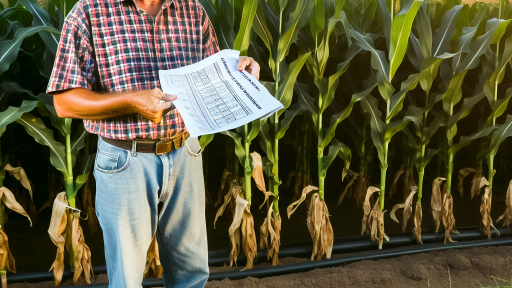Introduction to Farm-To-Table Concept and Its Importance in Food Quality
The farm-to-table movement emphasizes connecting consumers directly with food producers.
This approach seeks to improve food quality and safety through transparency.
Additionally, it supports local economies by promoting local farming practices.
Farm-to-table practices prioritize fresh, seasonal ingredients.
Consequently, consumers receive food that is more nutritious and flavorful.
Understanding this concept involves recognizing how regulations facilitate these connections.
Effective farm-to-table regulations ensure that food maintains its quality from farm to consumer.
Creating standards for farming practices enhances food safety and quality assurance.
Moreover, regulations can help fight food fraud and mislabeling.
These measures protect consumers’ health and wellness by ensuring authenticity.
Local sourcing reduces transportation time, preserving the food’s freshness.
In turn, this practice fosters community relationships between eaters and producers.
Overall, the farm-to-table model illustrates the link between food quality and consumer choice.
This connection empowers consumers to support sustainable and ethical food production.
As demand for high-quality food increases, farm-to-table practices will likely grow in popularity.
Transform Your Agribusiness
Unlock your farm's potential with expert advice tailored to your needs. Get actionable steps that drive real results.
Get StartedOverview of Current Farm-To-Table Regulations Affecting Food Quality
Understanding Farm-To-Table Regulations
Farm-to-table regulations aim to enhance food quality and safety.
These regulations establish guidelines for sourcing and distributing food.
They often require transparency from farms to consumers.
As a result, consumers can make informed choices about their food.
Key Components of Farm-To-Table Regulations
One key component is the traceability of food products.
This allows consumers to know where their food comes from.
Additionally, regulations focus on sustainable farming practices.
Sustainable methods enhance soil health and biodiversity.
Impact on Food Quality
Farm-to-table practices significantly improve food freshness.
Shorter supply chains lead to quicker delivery times.
Consequently, consumers receive fresher produce and products.
Moreover, higher food quality contributes to better nutrition.
Examples of Successful Implementation
Many restaurants implement farm-to-table models effectively.
For instance, Green Plate focuses on local farms for all ingredients.
This approach not only supports local economies but also enhances menu freshness.
Farm Fresh Cafe sources vegetables directly from nearby farms.
This creates a vibrant, seasonal menu that showcases local flavors.
Challenges and Solutions
Despite benefits, challenges exist in enforcing these regulations.
Compliance can be burdensome for small farms.
However, support programs can help alleviate these pressures.
Furthermore, educating consumers about these practices encourages demand.
The Future of Farm-To-Table Regulations
Future regulations may include stricter standards for food safety.
Innovations in technology could enhance traceability even further.
With ongoing support, farm-to-table practices will likely expand.
Showcase Your Farming Business
Publish your professional farming services profile on our blog for a one-time fee of $200 and reach a dedicated audience of farmers and agribusiness owners.
Publish Your ProfileThis expansion can significantly improve overall food quality in communities.
Impact of Local Sourcing on Nutritional Value and Freshness of Produce
Enhancing Nutritional Value
Local sourcing significantly increases the nutritional value of produce.
Freshly harvested fruits and vegetables retain more vitamins and minerals.
In contrast, items transported over long distances may lose vital nutrients.
For instance, kale consumed within hours of harvest offers superior nutrients.
Moreover, research shows that local produce often has a higher phytonutrient content.
Promoting Freshness
Freshness is crucial for both taste and health benefits.
Farm-to-table practices ensure that produce arrives swiftly from field to plate.
This minimizes time spent in storage, preserving taste and quality.
Furthermore, fresh ingredients enhance the flavors of various dishes.
In fact, many chefs prefer local sourcing for its superior taste and quality.
Environmental Impact
Local sourcing reduces transportation emissions, benefiting the environment.
This approach lowers carbon footprints associated with food transport.
Less travel time translates to fresher food for consumers.
Additionally, supporting nearby farmers strengthens local economies.
Ultimately, this creates a sustainable food system that benefits everyone.
Consumer Awareness and Choices
Consumers increasingly favor local products for health reasons.
As awareness grows, the demand for farm-to-table options rises.
This shift encourages farmers to prioritize quality over quantity.
Consequently, consumers enjoy a more satisfying and nutritious eating experience.
Local sourcing enhances both nutritional value and freshness.
You Might Also Like: Developing a Food Safety Plan for Your Farm
Role of Traceability in Enhancing Food Safety Standards
Understanding Traceability
Traceability refers to tracking food products through every stage of production.
This includes monitoring the journey from the farmer’s plate.
Furthermore, effective traceability improves transparency in the food supply chain.
Improving Food Safety
Enhanced traceability significantly improves food safety standards.
It allows for quick identification of contaminated products during outbreaks.
Moreover, authorities can efficiently manage recalls when necessary.
Fostering Consumer Confidence
Traceability fosters trust between consumers and food producers.
When consumers can trace their food back to the source, they feel more secure.
In addition, companies that implement effective traceability practices gain competitive advantages.
Implementing Comprehensive Systems
Implementing comprehensive traceability systems requires dedication and resources.
Farmers need access to technology for tracking and documenting processes.
Support from regulatory bodies is essential for successful implementation.
Examples of Effective Traceability
Many companies demonstrate the effectiveness of robust traceability systems.
- Green Valley Farms uses blockchain technology to track produce.
- Fresh Foods Co. employs QR codes for consumer access to product information.
- Harvest Partners integrates RFID tags for real-time tracking.
See Related Content: The Benefits of Food Safety Standards for Farm-to-Table Supply Chains
Consumer Awareness and Its Influence on Farm-To-Table Practices
Importance of Consumer Awareness
Consumer awareness significantly shapes farm-to-table practices.
Informed consumers demand higher-quality and sustainably sourced food.
They actively seek out local farms and organic products.
This awareness encourages farmers to enhance their production standards.
Showcase Your Farming Business
Publish your professional farming services profile on our blog for a one-time fee of $200 and reach a dedicated audience of farmers and agribusiness owners.
Publish Your ProfileRole of Education in Consumer Choices
Educational initiatives enhance consumer knowledge about food origins.
Workshops and community programs provide essential information.
Consequently, consumers make more informed purchasing decisions.
They become advocates for local producers and sustainable practices.
Impact of Social Media and Technology
Social media platforms amplify consumer voices and concerns.
Consumers share their experiences, influencing wider trends.
Technology enables easy access to farm details and product sourcing.
This transparency fosters trust between consumers and producers.
Demand for Transparency and Traceability
Today’s consumers prioritize transparency in food sourcing.
They want to know how food is produced and handled.
Traceability systems provide this vital information.
Farmers implementing these systems often see increased customer loyalty.
Community Support for Local Farmers
Consumer awareness drives community support for local farmers.
Farmers markets flourish as communities embrace local sourcing.
This support strengthens local economies and food resilience.
Moreover, it encourages sustainable farming practices among producers.
Gain More Insights: Implementing Effective Food Safety Practices on Your Farm

Case Studies: Successful Farm-To-Table Initiatives and Their Outcomes
Overview of Successful Initiatives
Numerous farm-to-table initiatives have thrived across various regions.
These programs often emphasize local sourcing and sustainable practices.
Each initiative presents unique strategies and outcomes that inspire others.
Case Study: Blue Harvest Farm
Blue Harvest Farm, located in Oregon, excels in organic vegetable production.
This farm supplies fresh produce to nearby restaurants and community markets.
By implementing rigorous quality standards, they maintain high food safety levels.
Consequently, their reputation for quality generates a loyal customer base.
Impact on Local Economy
Blue Harvest Farm significantly boosts the local economy.
They create jobs and support local suppliers and vendors.
This approach stimulates economic growth within the community.
Customer Engagement
This farm actively engages the local community through farm tours.
They educate visitors about sustainable farming practices.
This interaction fosters a strong relationship between consumers and producers.
Case Study: Fresh Roots Schoolyard Farm
Fresh Roots operates within the confines of urban schools in Vancouver.
They cultivate educational garden programs for students and families.
This initiative teaches children healthy eating habits and sustainability.
As a result, students develop a connection with their food sources.
Nutritional Outcomes
Fresh Roots improves students’ dietary choices through hands-on experiences.
Gardening activities encourage children to consume more vegetables.
Moreover, this program supports overall nutrition and wellness in schools.
Community Health Benefits
By promoting healthy food options, Fresh Roots positively impacts public health.
They reduce the prevalence of childhood obesity through education and access.
This initiative cultivates a healthier generation of young people.
Showcase Your Farming Business
Publish your professional farming services profile on our blog for a one-time fee of $200 and reach a dedicated audience of farmers and agribusiness owners.
Publish Your ProfileCase Study: The Farm Connection
The Farm Connection is a cooperative in Northern California.
It links farmers directly with consumers through a subscription model.
This model ensures fresh produce reaches families weekly.
Farmers receive fair compensation, promoting sustainable practices.
Sustainability Benefits
This initiative prioritizes sustainable farming techniques.
By focusing on local sourcing, it reduces carbon footprints significantly.
Additionally, it encourages biodiversity through diverse plantings.
Consumer Education and Awareness
The Farm Connection emphasizes transparency in food sourcing.
Workshops and newsletters educate consumers on farming practices.
This knowledge empowers consumers to make informed choices.
Delve into the Subject: Agricultural Zoning: Best Practices for Farmers
Challenges Faced by Farmers in Complying with New Regulations
Understanding Regulatory Compliance
Farmers face increasing pressure to comply with new regulations.
These regulations aim to enhance food quality and safety.
However, many farmers find it challenging to adapt quickly.
Transitioning to new standards often requires significant changes.
This can lead to confusion and frustration in the farming community.
Financial Burden of Compliance
Compliance with regulations often entails high costs.
Farmers must invest in new equipment and training.
Additionally, implementing better practices may require capital that farmers lack.
For smaller farms, these expenses can be particularly burdensome.
Many farmers worry about their financial stability under these conditions.
Time Constraints and Labor Challenges
Farmers often juggle numerous responsibilities daily.
Complying with regulations adds another layer of complexity to their work.
Limited labor availability exacerbates this issue.
This forces farmers to choose between compliance and daily operations.
Consequently, farmers may struggle to maintain quality standards.
Knowledge Gaps and Training Necessities
Many farmers lack knowledge about new regulations.
This gap can lead to unintentional non-compliance.
Training programs are essential to bridge this knowledge gap.
However, accessing effective training can be difficult for some farmers.
Without proper guidance, compliance remains elusive for many.
The Impact of Market Competition
Market competition adds pressure to comply with regulations.
Farmers fear falling behind competitors who adapt quickly.
This affects their ability to remain viable in the market.
Additionally, non-compliance can lead to penalties that hurt profitability.
As a result, farmers must balance compliance with competitiveness.
Future Trends: Technological Innovations Supporting Farm-To-Table Regulations
Embracing Digital Platforms
Digital platforms enhance communication between farmers and consumers.
These platforms provide transparent information about food sources.
Additionally, consumers can access details regarding farming practices.
Mobile applications streamline ordering processes for local produce.
Showcase Your Farming Business
Publish your professional farming services profile on our blog for a one-time fee of $200 and reach a dedicated audience of farmers and agribusiness owners.
Publish Your ProfileUltimately, this fosters a closer relationship between producers and consumers.
Utilizing Precision Agriculture
Precision agriculture employs advanced technologies for efficient farming.
It optimizes resource use, improving crop yield and quality.
Farmers utilize data analytics to monitor field conditions effectively.
This approach minimizes waste and reduces environmental impact.
Consequently, it supports sustainable practices in food production.
Blockchain Technology for Transparency
Blockchain technology enhances traceability in the food supply chain.
This innovation ensures product authenticity by documenting every transaction.
Consumers can verify the journey of their food from farm to table.
Moreover, this technology helps reduce food fraud and recalls.
As a result, trust in food systems increases significantly.
Advancements in Food Preservation
New preservation techniques extend the shelf life of fresh produce.
Innovative methods, such as high-pressure processing, enhance food safety.
These advancements retain nutritional value while preventing spoilage.
Consumers benefit from fresher options that last longer.
In turn, this supports local farmers by reducing waste.
Integration of Artificial Intelligence
Artificial intelligence streamlines farming operations through automation.
It analyzes data to predict market trends and consumer preferences.
AI-driven solutions help farmers make informed planting and selling decisions.
This technology aids in crop management, reducing manual labor requirements.
Ultimately, AI supports efficiency and productivity across the industry.
Additional Resources
Farm to Fork Strategy – European Commission
Food Safety and Trade: Regulations, Risks, and Reconciliation …




